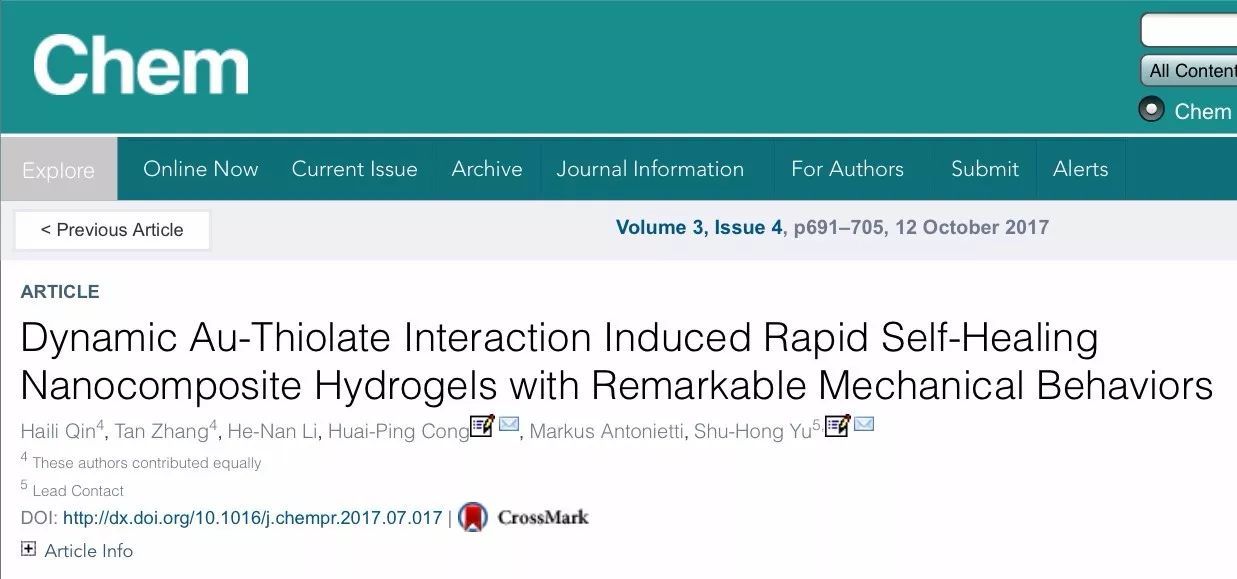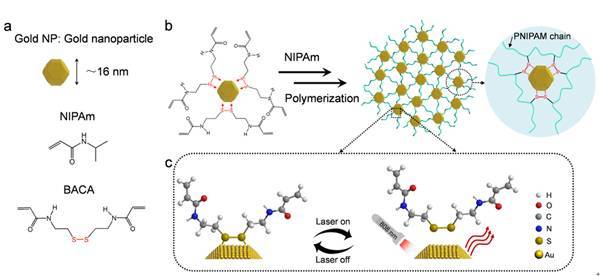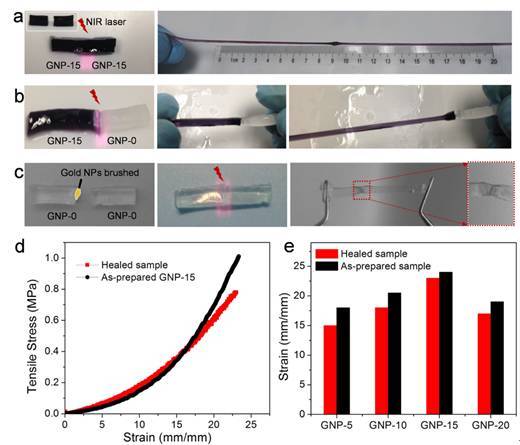PartⅠ Thermo.responsiveHydrogeIFunctionaIMaterials
1Structure—Function Relationship ofThermo—responsive Hydrogels
1.1Introduction
1.2Effect oflnternal Microstructure on the Equilibrium Thermo—responsive Phase Transition
1.3Effect oflnternal Microstructure on the Dynamic Thermo—responsive Phase Transition
1.4Effect of Internal Microstructure on the Thermo—responsive Controlled—Release Characteristics
1.5 Effect oflnternal Microstructure on the MechanicalStrength of Thermo—responsive Hydrogels
1.6 Summary
References
2Preparation and Properties of Monodisperse Thermo—responsive Microgels
2.1Introduction
2.2Submicron—Sized Monodisperse Thermo—responsiveCore—Shell Hydrogel Microspheres Fabricated via Surfactant—Free Emulsion Polymerization
2.2.1 Preparation of P(NIPAM—co—St) Seeds
2.2.2Preparation of Core—Shell Microsphereswith PNIPAM Shell Layers
2.2.3 Monodispersity ofCore—Shell Microsphereswith P(NIPAM—co—St) Cores and PNIPAMShell Layers
2.2.4 Thermo—responsive Characteristicsof the Core—Shell Microspheres with PNIPAM Shell Layers
2.3 Positively Thermo—responsive Submicron—SizedMonodisperse Core—Shell Hydrogel Microspheres
2.3.1Preparation ofPositively Thermo—responsive Submicron—Sized Monodisperse Core—ShellHydrogelMicrospheres
2.3.2 Morphological Analyses of the Microspheres
2.3.3 Positively Thermosensitive Swelling Characteristics
2.4 Monodisperse Thermo—responsive HydrogelMicrospheres and Microcapsules Preparedvia Membrane Emulsification
2.4.1Strategies for Preparation ofMonodisperse PNIPAM Microspheres and Microcapsules via Membrane Emulsificatio
2.4.2Morphology of Prepared MonodispersePNIPAM Microspheres
2.4.3Morphology of Prepared Monodisperse PNIPAM Microcapsules
2.4.4 Effect of Freeze—Drying and RehydratingTreatment on the Thermo—responsiveCharacteristics of PNIPAM Microspheres
2.5 Monodisperse Thermo—responsive Hydrogel Microspheres and Microcapsules Fabricated with Microfluidics
2.5.1Microfluidic Fabrication ofMonodisperseThermo—responsive Microgels with TunableVolume—PhaseTran sitionKinetics
2.5.2 FabricationofMonodisperse Thermo—responsive Microgelsin a Microfluidic Chip
2.5.3Fabrication ofMonodisperse Microspheres with PNIPAM Core and Poly(2—HydroxyethylMethacrylate) (PHEMA) She
2.6 Summary
References
3 Flow and Aggregation Characteristics of Thermo—responsive Microgels During Phase Transition
3.1 Introduction
3.2Flo and Aggregation Characteristics of Thermo—responsive Spheres During the Phase Transition
3.2.1 Preparation of Monodisperse PNIPAMHydrogel Spheres
3.2.2Thermo—responsive Volume—Phase Transition Characteristics of PNIPAM Hydrogel Spheres
3.2.3 Flow Characteristics of PNIPAM HydrogelSpheres During the Phase Transitionin a Transparent Glass Pipe
3.3Flow Characteristics of Thermo—responsiveMicrospheres in Microchannel During the Phase Transition
3.3.1 Synthesis of Microspheres in a SimpleMicrofluidic Device
3.3.2 Flow Characteristics of PNIPAMMicrospheres in Horizontal Microchannel at Low Reynolds Number of Fluid
3.3.3 Effect of the Diameter Ratio of PNIPAMMicrosphere to Microchannel on the FlowCharacteristics
3.4 Effects of Microchannel Surface Property on FlowBehaviors of Thermo—responsive Microspheres During the Phase Tran sition
3.4.1 Modification of Inner Surface of Glass Microchannel
3.4.2 Characterization of Wettability and Roughness of Modified Glass Microchannels
3.4.3 Effects of Surface Wettability and Roughnessof Microchannel on the Average Velocity of Fluid in Microchannel
3.4.4 Effect of Surface Wettability and Roughness of Microchannel on Aggregation Behaviorsof PNIPAM Microspheres During the Phase Transition
3.4.5Effect of Surface Wettability of Microchannel on Flow Characteristics of PNIPAM Microspheres
3.4.6 Effect of Surface Roughness of Microchannel on Flow Characteristics of PNIPAM Microspheres
3.4.7 Flow Behaviors of PNIPAM Microspheresin Microchannel with Hydrophobicand Rough Surface During the Phase Transition
3.5Summary
References
4Polyphenol—Induced Phase Transition of Thermoresponsive Hydrogels
4.1 Introduction
4.2Phase Transition Behaviors of PNIPAM MicrogelsInduced by Tannic Acid
4.2.1Preparationof MonodispersePNIPAM Microgels
4.2.2 Dynamic Isothermal Volume—Phase Transition of PNIPAM Microgels Induced by TA
4.2.3Equilibrium Isothermal Volume—PhaseTransition of PNIPAM Microgels Induced by TA
4.2.4Thermosensitive Phase Transition of PNIPAMMicrogels in TA Solutions
4.3 Phase Transition Behaviors of PNIPAM MicrogelsInduced by Ethyl Gallate
4.3.1 Preparation of PNIPAM Microspheres and Core—Shell PNIPAM Microcapsules
4.3.2 Thermo—responsive Phase Transition Behaviors of PNIPAM Microspheres in EG Solution
4.3.3The Intact—to—Broken TransformationBehaviors of Core—Shell PNIPAM Microcapsules in Aqueous Solutionwith Varying EG Concentration
4.4 Summary
References
5 Functional Membranes with Thermo—responsive Hydrogel Gates
5.1Introduction
5.2Functional Membranes with Thermo—responsive Hydrogel Gates Fabricated by Plasma—InducedPore—Filling Graft Polymerizatio
5.2.1Regulation of Response Temperatureof Thermo—responsive Membranes
5.2.2 Effect of Grafting Degree on the Thermo—responsive Gating Characteristics
5.2.3Gating Characteristics of Thermo—responsiveMembranes with Grafted Linearand Cross—linked Hydrogel Gates
5.2.4Membranes with NegativelyThermo—responsive Hydrogel Gates
5.2.5 Composite Thermo—responsive Membrane System
5.2.6Thermo—responsive Affinity Membrane
5.3Functional Membranes with Thermo—responsive Hydrogel Gates Fabricated by Atom—Transfer Radical Polymerization
5.4Functional Membranes with Thermo—responsive Hydrogel Gates Fabricated by Free—Radical Polymerization
5.5Summary
References
6Functional Microcapsules with Thermo—responsiveHydrogel Shells
6.1 Introduction
6.2 Functional Microcapsules with GraftedThermo—responsive Hydrogel Chains in the Porous Membranes as Gates
6.3 Functional Microcapsules with Thermo—responsiveMicrogels in the Membranes as Gates
6.4Functional Microcapsules with Thermo—responsiveCross—linked Hydrogels as Membranes
6,5Summary
References
……
PartⅡ pH—Responsive Hydrogel Functional Materials
PartⅢThermo—/pH—Dual—Responsive HydrogelFunctional Materials
PartⅣAlcohol—Responsive Hydrogel Functional Materials
PartⅤ Glucose—Responsive Hydrogel Functional Materials
PartⅥ Ion—Recognizable Hydrogel Functional Materials
PartⅦ Molecular—Recogruzable Hydrogel Functional Materials
Index

 组织工程用水凝胶材料
组织工程用水凝胶材料

 美研制出廉价环保的新型水凝胶材料
美研制出廉价环保的新型水凝胶材料





